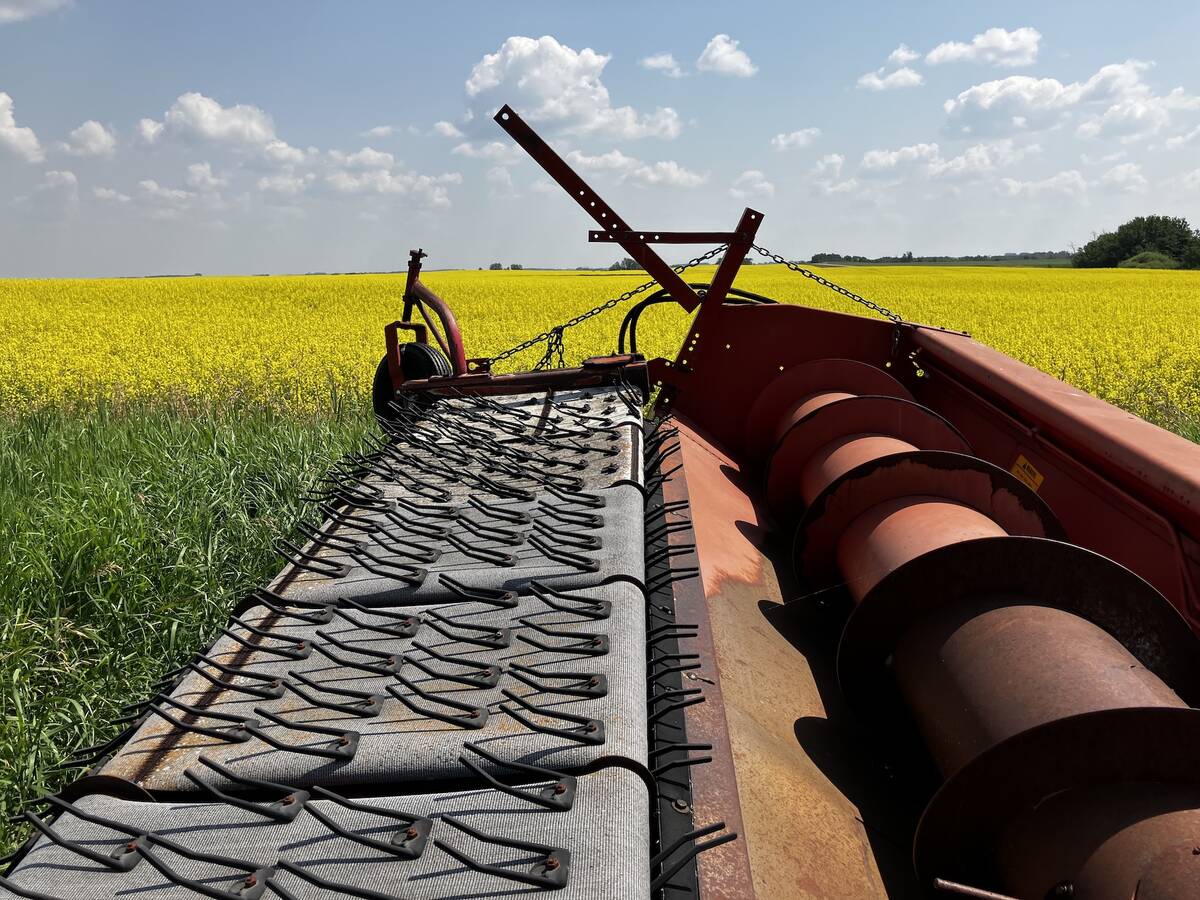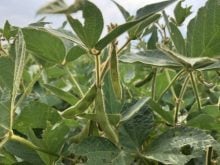For three-times-daily market reports from Don Bousquet and RNI, visit “ICE Futures Canada updates” at www.manitobacooperator.ca
Grain and oilseed f u ture s at the ICE Canada futures market closed the year with a lightly traded choppy tone as prices generally worked a bit lower. There was little fresh news. Canola climbed almost to $400 per tonne in the March contract before edging back down. Demand however is very strong and that underpinned the market and offset the record-large supply. Western barley also posted losses on large supplies and sluggish demand with end-users covered into February. Chicago soybean and corn markets also rallied to significant resistance levels and then ran into selling and drifted back down from the higher levels.
Read Also

Stronger canola prices welcome surprise
Mid-November canola market holding above resistance based on durable demand, resulting in pleasantly higher canola prices for Canadian farmers
A weak U. S. dollar gave support . Soybeans drew additional support from strong demand, as China continues to be a big buyer, and lingering concern about dryness in South American soybean-producing areas. Corn staged an impressive rally that saw futures rise almost $1/bu. in eight trading sessions. As the market approached the $4/bu. level selling developed that pushed the market back down. Corn drew support from strong demand and dryness affecting the South American corn crop.
U. S. wheat futures rallied holding onto most of their gains. A shift in technical signals prompted commodity funds to buy back their futures, which lifted the market. The drought-reduced Argentine wheat crop also gave support. Export demand also saw an increase as the year ended and that contributed to the gains.
The markets have moved back into the trading ranges I was looking for in the U. S. market, while I still feel that canola will ultimately break above the $400-per-tonne level. Canola demand is exceptional with exports and domestic demand likely to hit a record 11.5 million tonnes. However, supplies are huge and we will see large canola ending stocks in 2008-09.
The markets are increasingly focusing on acreages in the U. S. and in Canada for 2009. Of all commodities, grains and oilseeds have the tightest ending stocks and the greatest chance for a rally in 2009, regardless of the economic turmoil. This also means that the market will not want to see acres drop in 2009. Yet current prices seem to be telling farmers to cut back on plantings.
In fact , the closely watched Informa Economics estimated U. S. 2009 corn acres at 82.29 million, down from the 85.89 million planted in 2008. Informa pegged U. S. soybean acres at 81.46 million, up from 75.88 million in 2008. U. S. winter wheat planting was estimated at 44.08 million, down from 2008’s 46.18 million acres.
These numbers were based on prices early in December and generally reflect the big declines in the Sept.-Nov. period. Informa noted that corn prices dropped $338 per acre in the three months, while soybeans fell only $156/acre.
However, this is not the last word as markets staged a significant rally in December and more strength is likely as the U. S. will need to see unchanged to higher corn acres in 2009 due to increasing livestock demand and expanding ethanol production.
The latest USDA supply-demand report pegged 2008-09 corn ending stocks at 1.474 billion bushels, up from their November forecast but still below last year’s 1.6 billion bushels when corn prices hit $7.50/ bu. U. S. corn demand in 2009-10 is set to hit 12.8 billion bushels which means acres will have to increase or prices will go sky high to ration demand.
Right now most analysts are uncertain about acreage for 2009 because of the current economic uncertainty. The cost of planting, which is $235 per acre for soybeans, $632/acre for corn and $390/acre for wheat, certainly suggests more soybean area.
We do know already that U. S. wheat acres will be down about five per cent or four million acres in total. With global wheat acreage forecast to fall five per cent to 10 per cent, global wheat production, given an average production year, will drop to the point that supplies will be tightening again and prices will start to climb.
Canadian wheat acres are expected to fall in 2009 with estimates ranging from five per cent to 10 per cent lower. Durum is expected to see the biggest slide as farmers will be carrying a lot of durum in their bins.
For corn, most analysts say that U. S. corn acres will fall one per cent to five per cent based on current prices. However, the rally we have seen has bought some acres as has the drop in fertilizer and crude oil prices.
Based on demand of 12.8 billion bushels, analysts feel the corn market will need 88.3 million acres, up about 2.5 per cent from 2008.
Right now, U. S. Midwestern farmers have unusual flexibility in their planting decisions as fertilizer use this fall was exceptionally low, giving farmers the choice between corn and soybeans in the spring.
The impact of a higher corn market will be muted on Canadian barley prices though as barley does not have the biofuel component that corn has. As a result, analysts generally expect lower Canadian barley acres as disappointing prices this year and large on-farm stocks will limit willingness to plant.
The expectation for higher U. S. soybean acres is based on lower input costs and tight on-farm supplies. Demand has been exceptional for U. S. beans and that looks like it will continue. Soybean futures are expected to rally to the $9-to $10-per-acre area as soybeans compete with $6/bu. corn for acreage.
This will give support to the canola market and will help to boost spring canola prices as the trade does fear a drop in acres. With canola a very high input cost crop, the risks for a farmer are very high, only firm prices will get canola plantings to hold at the 15-million-acre level of 2008.
Farmers have told me that $10/bu. canola is not high enough to hold acres unchanged unless input prices fall even more. With canola demand in 2009-10 likely to be over 12 million tonnes, production needs to be about 10.5 million tonnes, at a minimum, which would allow for a modest decline in canola acres and a large drop in 2009-10 canola ending stocks. However, it still means that canola prices have to climb between $9 to $10 at the farm gate this spring in order to keep canola acres from dropping too much.
Prepare yourself for another price roller-coaster ride this spring as the markets try to encourage acreages.
– Don Bousquet is a well-known market analyst
and president of Resource News International (RNI),
a Winnipeg company specializing in grain and
commodity market reporting.














